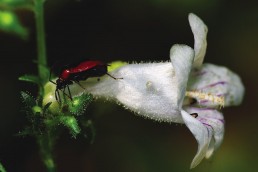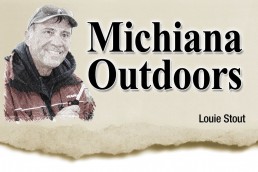The Creation of Wildflower Photos
SHARE THIS POST
I was raised learning Biblical creation. Everything was created in six days, but I like to fantasize that wildflowers were a special addendum. Doing it all in just six days must have been quite a job, and I like to image that once completed, He sat down and let out a big “Whew,” which blew gently across the earth and caused a blanket of wildflowers to appear.
Many wildflowers are minuscule and go unnoticed, such as glade buttercups, button weed and fog fruit. But the closer one looks at nature the more awesome it becomes. Under the examination at full macro or with the aid of a magnifying glass, details of the minute, intricate designs begin to mimic the beauty of the cosmos.
I was also raised by a mother loaded with timeworn expressions that rang with a certain wisdom and wit. Most were melodic rhymes that tickled the ear time after time and etched their poetic cadences deep inside. Lela Pearl Kruger was as “country” as her name implied. And she knew most, if not all, of these ditties.
One day when a steady downpour deterred my outdoor plans, to my complaints about the weather, she retorted, “Haven’t you heard that April showers bring May flowers?”
I didn’t like her sayings back then, and I didn’t give a flip about flowers. I just wanted to play baseball or go fishing or shoot something with my BB-gun. Flowers were for girls and sissies.
So, even though my first few decades of life were spent as an outdoors writer, I seldom noticed wildflowers unless they were big like the towering coneflowers or overpoweringly fragrant honeysuckles or the menacingly malicious blackberry brambles.
But some years ago my game bag and creel reached an accumulative overflow. And, to my surprise, I reached a ripe old age and slowed enough to literally smell the roses, the wild ones.
Around this time I invested in my first high-quality macro lens and started looking for things to magnify and record. Tiny blooms were marvelous models. And once I started hunting them I was enamored and delighted by the diversity. The intricate beauty that had previously escaped my earlier gazes now intrigued me. There’s no telling how many I unwittingly trampled during the decades of my other diversions.
Are you enjoying this post?
You can be among the first to get the latest info on where to go, what to use and how to use it!
Just in Missouri, botanists have identified 2,372 different species of wildflowers. As an amateur, I’ve photographed and identified over 500 of them and have over 250 unidentified images, including many too small to make it into the guidebooks.
Finding, identifying, and photographing them is an engrossing hobby that’s similar to birding. Hundreds of species of wildflowers are within a leisurely stroll through the forests and fields. Many species, like the tiny bluets, also appear in people’s backyards before the first grass cutting.
To identify these flowers, I’ve relied primarily on online searches and two guide books: Missouri Wildflowers, by Edgar Denison, and Wildflowers and Ferns of Kentucky, by Thomas G. Barnes and S. Wilson Francis. I’ve pestered Dr. Barnes into something of a friendship. He teaches budding botanists at the University of Kentucky and takes stunning pictures.
A few years ago, Barnes gifted me a copy of his latest book, How to Find and Photograph Kentucky Wildflowers. I highly recommend this book, and a macro lens for a fascinating and rewarding hobby. As you peruse through this book and the others and the guides mentioned you’ll notice a number of beautiful blooms with “weed” as part of their common monikers. We inherited these disparaging descriptions from the practical pioneers. Anything cattle wouldn’t consume then was considered a useless or peaky weed. Cattle wouldn’t eat smartweed, frostweed, milkweed, ragweed, blue-weed, ironweed, pinkweed, butterweed, rosinweed, cup rosin weed, hawkweed, squaw-weed, jimsonweed, pineweed, sneezeweed or carpenter’s weed, so you probably shouldn’t either. But they all have and still produce beautiful flowers.
Native Americans didn’t consider any of these weeds and used many wildflowers for practical purposes. They ate the bulbs of hyacinth, the tubers of man-of-the-earth, the stems and leaves of many others, and made a red dye from bloodroot. Many of the flowering plants also served as a “natural” drug store for remedies.
The days of the settling pioneers and early Native Americans are gone. My mother and all her country wisdom I now miss are gone. But these days I appreciate April showers because I know that they bring May flowers.
May is the most prolific month for wildflowers, but the season starts in late January/early February with the aptly named harbinger of spring. All of spring and most of summer are full of wildflowers, but even fall and early winter are seasons that are blessed with white tresses, pink rough blazing stars, purple lobelia, yellow goldenrods, blazing red cardinal flowers and asters of many shades and sizes. There is indeed a world of colorful wonderment to be uncovered under the “breath” of the creation of these flowers.
MWO
SHARE THIS POST
You may also like...
Did you enjoy this post?
You can be among the first to get the latest info on where to go, what to use and how to use it!
Ron Kruger
Ron Kruger has been communicating the outdoor experience for more than four decades. He has worked as a full-time guide for trout on the North Fork, for crappies and bass on Kentucky Lake and for smallmouths on the Current River. He has served as editor of three outdoor magazines, and owns a patent on a fly/lure called the Desperate Diver.

